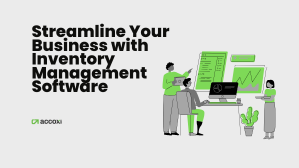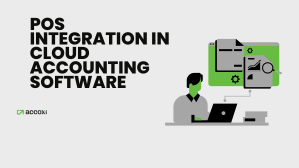

October 25, 2022

Every business around the globe is aligning with digital transformations and adapting to technological trends to grow in a competitive market. The use of electronic invoices or e-invoices has also drastically increased throughout the business areas. To get a better understanding of e-invoices, let’s look into some vital information below.
The term "e-invoicing" as used in the GST law is referring to electronic invoicing. The process of electronic invoicing or e-invoicing is sending invoices generated by the current ERP or billing system to one of the approved Invoice Registration Portals. Every invoice receives an identification number under the e-invoicing system from the Invoice Registration Portal. GST-registered businesses are required to produce an electronic invoice for B2B transactions and also an e-way bill is utilized when moving products from one location to another.
According to the GST law, some enterprises must begin generating e-invoices by October 1, 2022. All enterprises that are GST-registered and had yearly sales of more than Rs. 10 crores in a prior fiscal year between FY 2017–18 and FY 2021–22 are covered.
Businesses that generate e-invoices for all taxable Business-to-Business, Business-to-Government, export transactions, and reverse charge transactions under Section 9(3) of the CGST Act are currently those having a turnover of more than Rs. 20 crores. The rest of the documents are out of the scope of the system, which primarily includes tax invoices, debit notes, and credit notes.
There are several ways to generate electronic invoices. The most common ones are GST e-invoice preparing and printing (GePP), an offline and momentarily practical solution on IRP, and API integration, a long-term, scalable, and automated method. Others include SMS-based mobile e-invoicing and integration using ASP-GSP. If applicable firms fail to provide their GST-registered customers e-invoices on or after October 1, 2022, they are required to pay a penalty that is greater than the tax amount or Rs. 10,000 for each invoice.
The e-invoice is checked for accuracy and legitimacy by the official invoice registration portals, which also confirm and authenticate it. The signed QR code and invoice reference number are returned on the electronic invoice. It is an incomplete and inaccurate invoice if they raise one without the IRN and signed QR code. A penalty of up to Rs. 25,000 per such invoice would be applied.
The steps involved in creating or raising an e-invoice are as follows:
There are some exclusions, including those that apply to banks, NBFCs, insurance companies, GTAs, passenger transport services, government agencies, services that provide entry to the screening of motion pictures in multiplexes, SEZ units, and individuals who provide OIDAR services. The system must be adhered to by everyone else.
Let’s get to know furthermore on the ones exempted from e-invoicing:
The documents include delivery receipts, invoices from ISD, bills of supply, financial or business credit notes, or debit notes.
Any business-to-consumer sales, nil-rated or non-taxable or exempt business-to-business sales, exempt business-to-government sales, imports, high seas sales, bonded warehouse sales, free trade & warehousing zones (FTWZ), and Section 9(4) of the CGST Act covers the supplies made under reverse charge.
E-invoices are being used in different businesses to enhance efficiency and reduce expenses in the firms. Accoxi is an effective accounting software that simplifies all your accounting tasks, creates e-invoices, generates business reports, and helps to stay on top of the global market.
Are you in search of a quality-assured accounting software that can aid in generating e-invoices easily and managing all your accounting tasks smoothly? Connect with us and know how Accoxi can help you scale up your business effectively.




